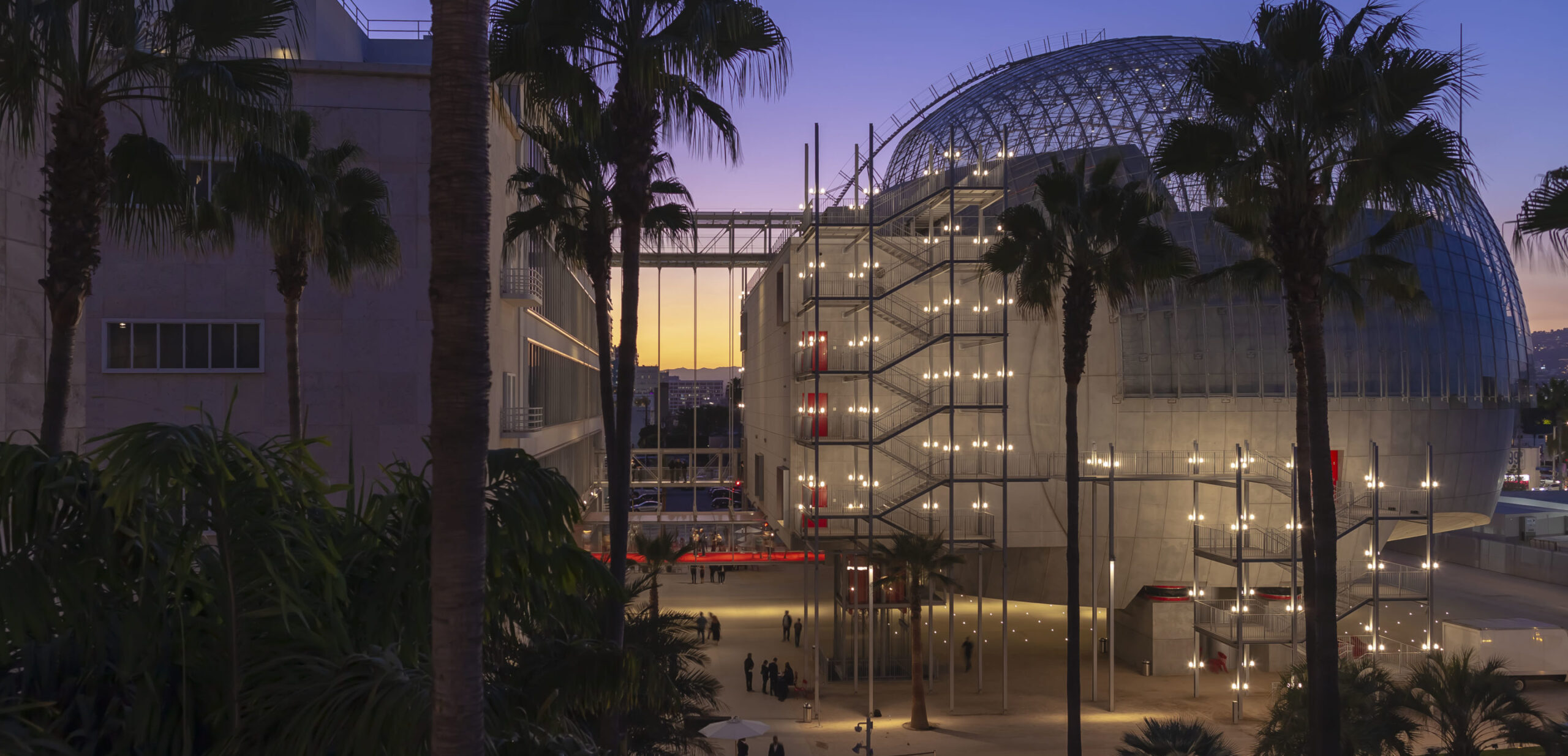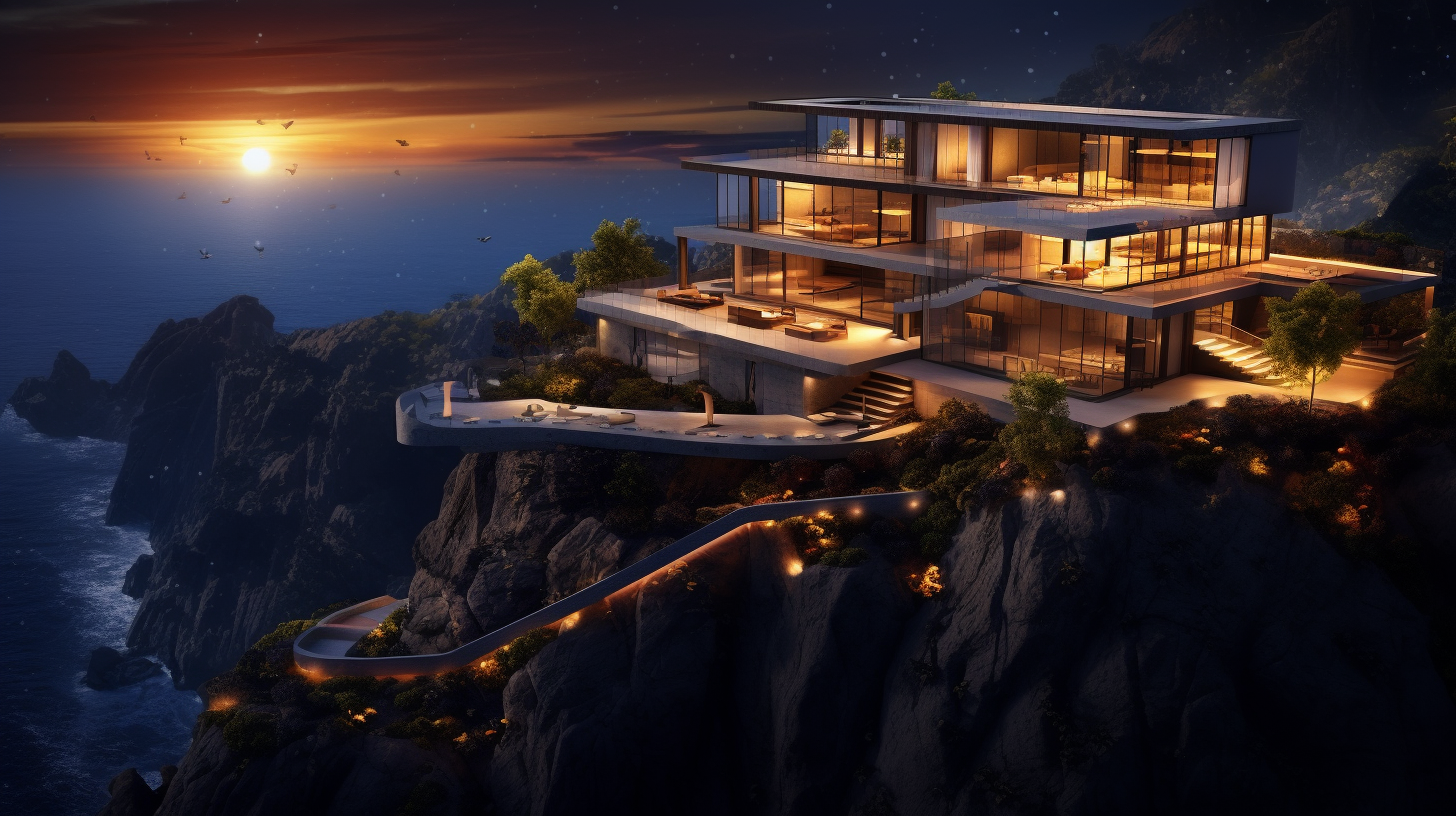Architects: Want to have your project featured? Showcase your work by uploading projects to Architizer and sign up for our inspirational newsletters.
Rising real-estate values and property speculation make housing unaffordable for an increasing part of urban populations. Barcelona is a notable example of where these tensions are laid bare. There, social housing is limited and Airbnb accommodations have taken off dramatically, driving rental prices up. As a result, part of the population has been forced out of the city.
Yet, in Barcelona, efforts to create innovative, affordable housing models bring hope for more environmentally friendly, energy-efficient and socially inclusive housing. These models encourage neighborly interaction, hence strengthening communities. Could they serve as an example for other cities and architects globally?
Tourist Accommodation Surplus or Lack of Funding?
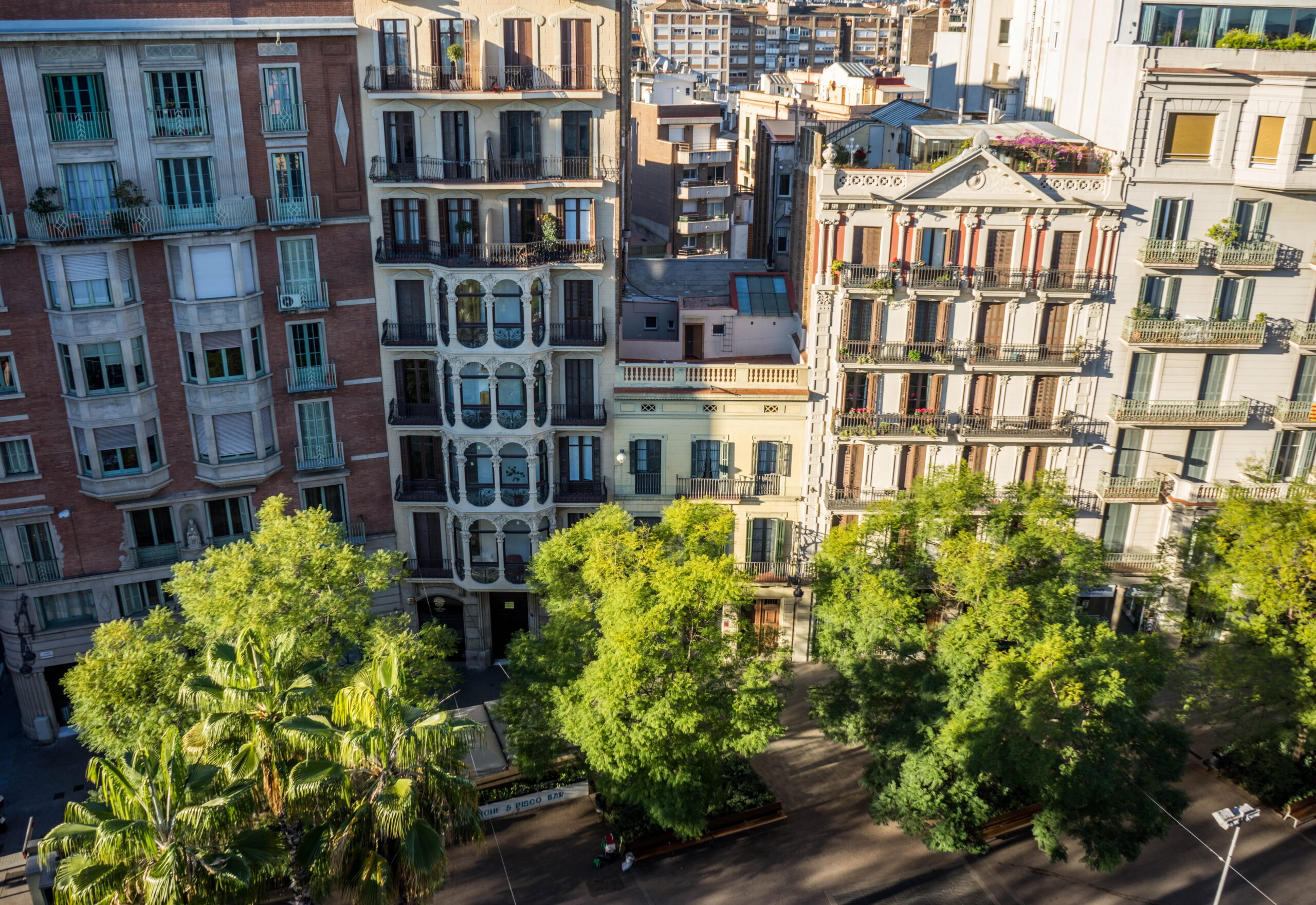
View of Barcelona’s early 20th-century residential architecture. Image via Pxfuel
To what extent are tourist rentals responsible for high rents and purchase prices? Accommodation of tourists in residential buildings certainly drives long-term rental prices up, as confirmed by the Catalan Holiday Rentals Association (APATUR) and the HUTs (Habitatges d’Us Turistic, Catalan for Apartments for Tourist Use). But on the other hand, funding to create affordable housing is also insufficient.
Changes in government programs hamper the opportunity to promote affordable social housing through private sector involvement. In other words, when cities are unsuccessful at creating more affordable sustainable housing, quite often it is not so much because we don’t know how to design it, but rather the blame can be pointed at financial models and potential investors’ lack of interest in projects that they might not consider lucrative. New solutions are needed to boost the creation of affordable housing.
Innovative Models of Affordable Housing
To accelerate the supply of public housing in the city of Barcelona, the IMHAB (Barcelona’s Municipal Institute of Housing and Renovation) is promoting an industrialized construction system using shipping containers. The benefits of this system are notable: architectural quality, reduction of building time and minimal environmental impact during construction.
Architects, attracted by the concept and well aware of the city’s housing shortage, are bringing a new constructive approach to their design proposals. The container aesthetic is generally relegated to the background to facilitate the integration of the prefabricated building into its urban context. Who benefits from these homes? People in immediate need of housing and young people under 35 through grants for rent payment. Other housing concepts such as “Cohousing” and “grant of use cooperative” housing models offer easier access to affordable public housing.
Sustainability and Innovation
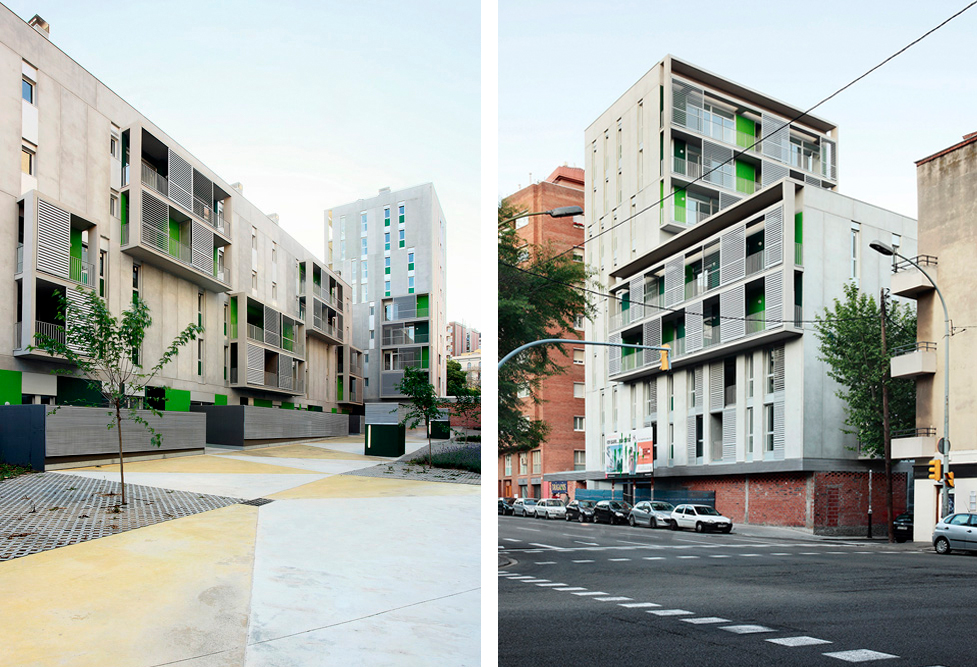
58-unit social housing development by FLEXO Arquitectura, Barcelona, Spain | Photos by José Hevia
From a sustainability and innovation standpoint, the design of affordable social housing is driven — although not exclusively — by the need to explore construction techniques and materials that are cost-effective, reduce construction time and have a minimal environmental impact. The implementation of sustainable principles is unequivocally beneficial to the occupants’ well-being and the community.
In this regard, the 58-unit housing project in the Barcelona district of Les Corts by FLEXO Arquitectura sparks curiosity. The material selection and massing make the building unique and, at the same time, facilitate its integration into the urban context. South-facing balconies with louvers offer outdoor space protected from the sun, which translates into energy-saving.
Examples of Good Design for Affordable Sustainable Housing
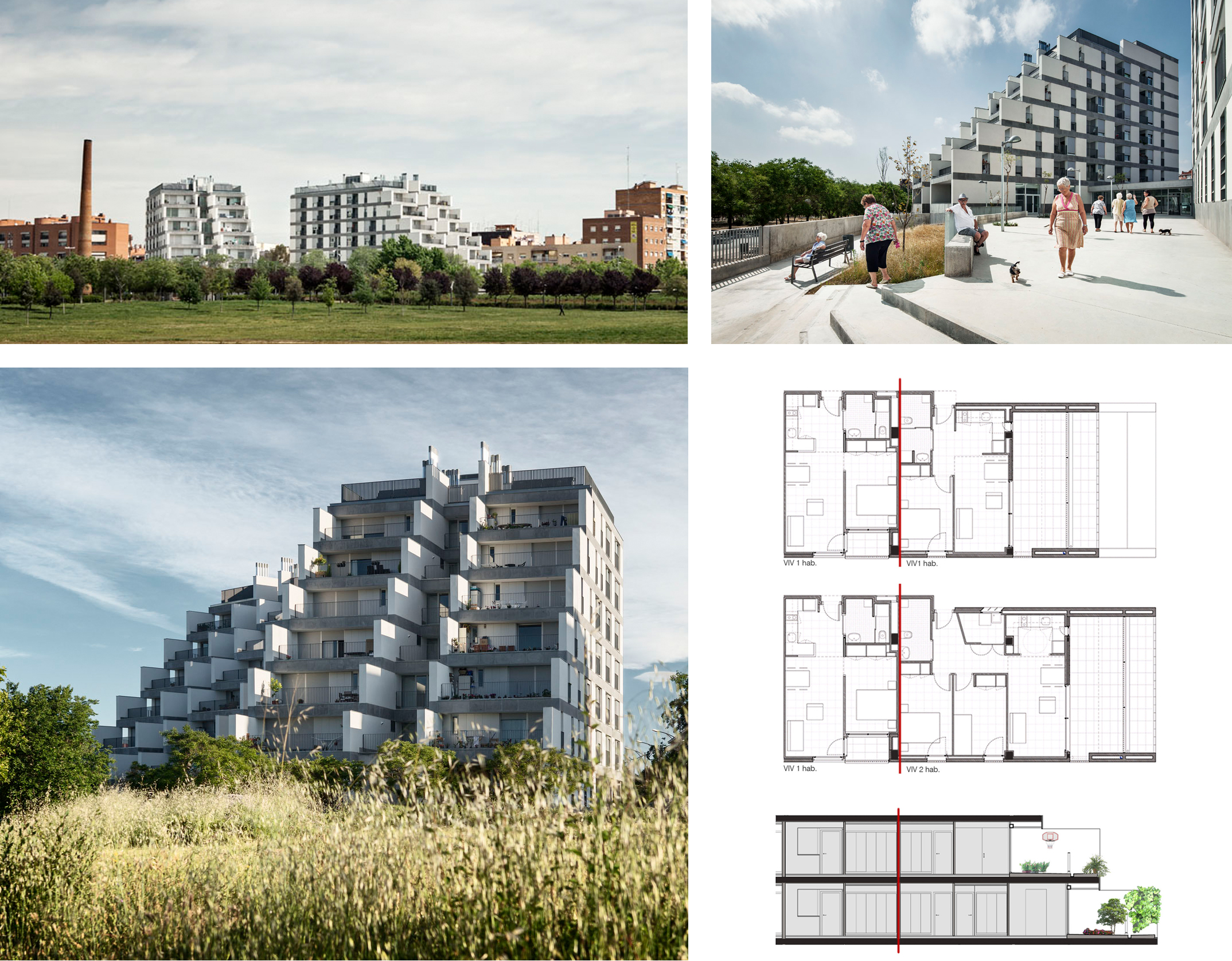
114-unit Public Housing for the elderly by Sauquet Arquitectes Associats, Sabadell, Spain | Photos by Jordi Surroca.
While work needs to be done before we reach a level of affordable housing that is also sustainable, a good number of Barcelona architects are focusing their efforts on multi-unit residential projects that satisfy the needs of population groups — such as the elderly, young adults and low-income families — without sacrificing good design.
The 114-unit public housing building by SAa Sauquet Arquitectes i Associats was built at the edge of Sabadell, a town north of Barcelona, to provide housing for the elderly. The needs and habits of this population group guided the design of the building. The result is a construction cascading down a hill with south-facing terraces overlooking a public park. The site conditions and the design concept generated an aesthetic reminiscent of the typical beach resorts along the Mediterranean coast.
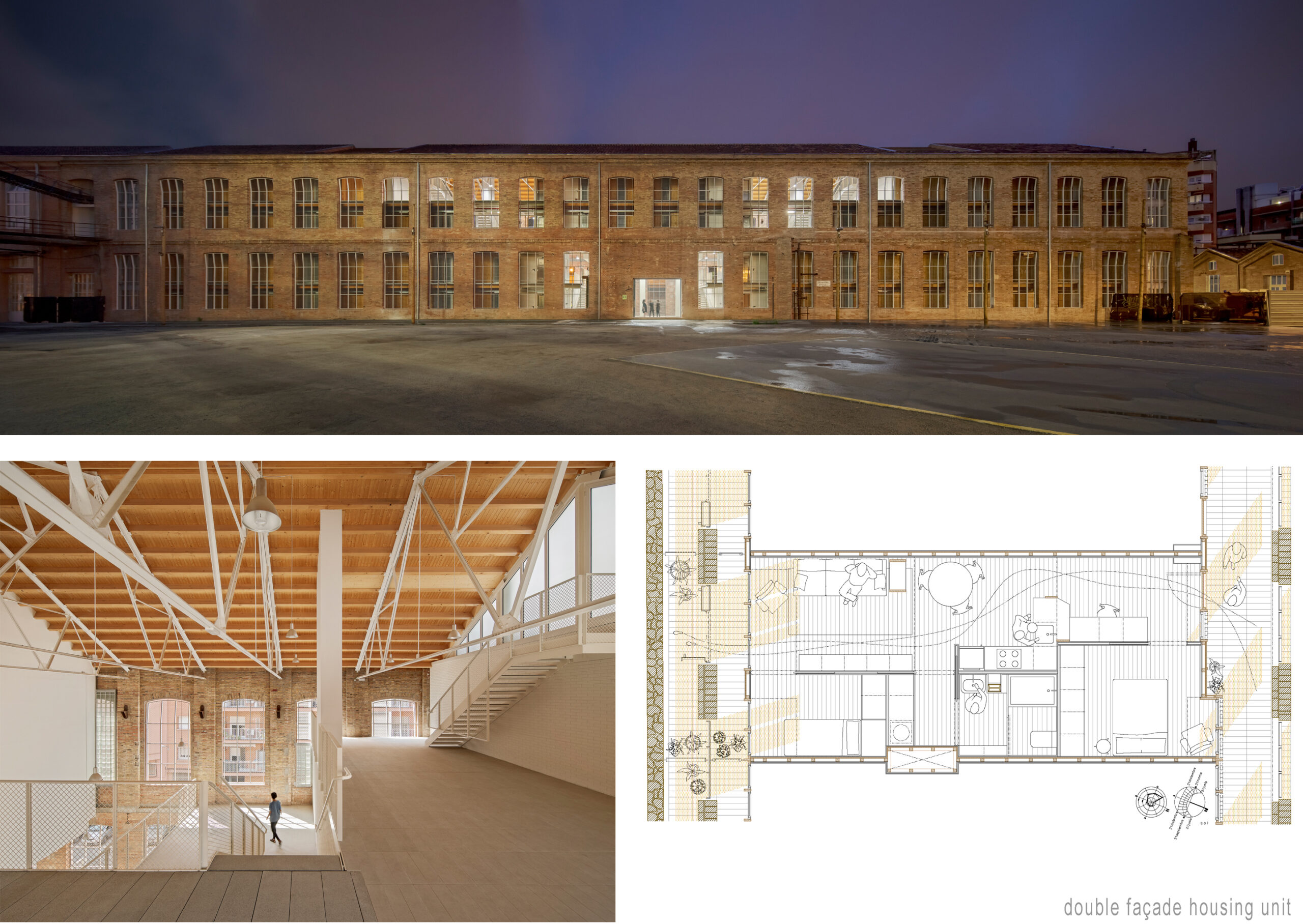
46-unit social housing complex Fabra & Coats by Roldán + Berengué Arqts, Barcelona, Spain | Photos by Jordi Surroca.
Barcelona’s 19th-century metal and textile industry offers investors, developers and architects endless opportunities to transform old derelict structures into new buildings for residential or commercial use. Roldán + Berengué, arqts. refurbished a 1905 thread storage building of the Fabra & Coats textile factory into a 46-unit social housing complex as part of a larger transformation development. The project achieves two things: it provides much-needed social housing and contributes to the preservation of the city’s industrial heritage.
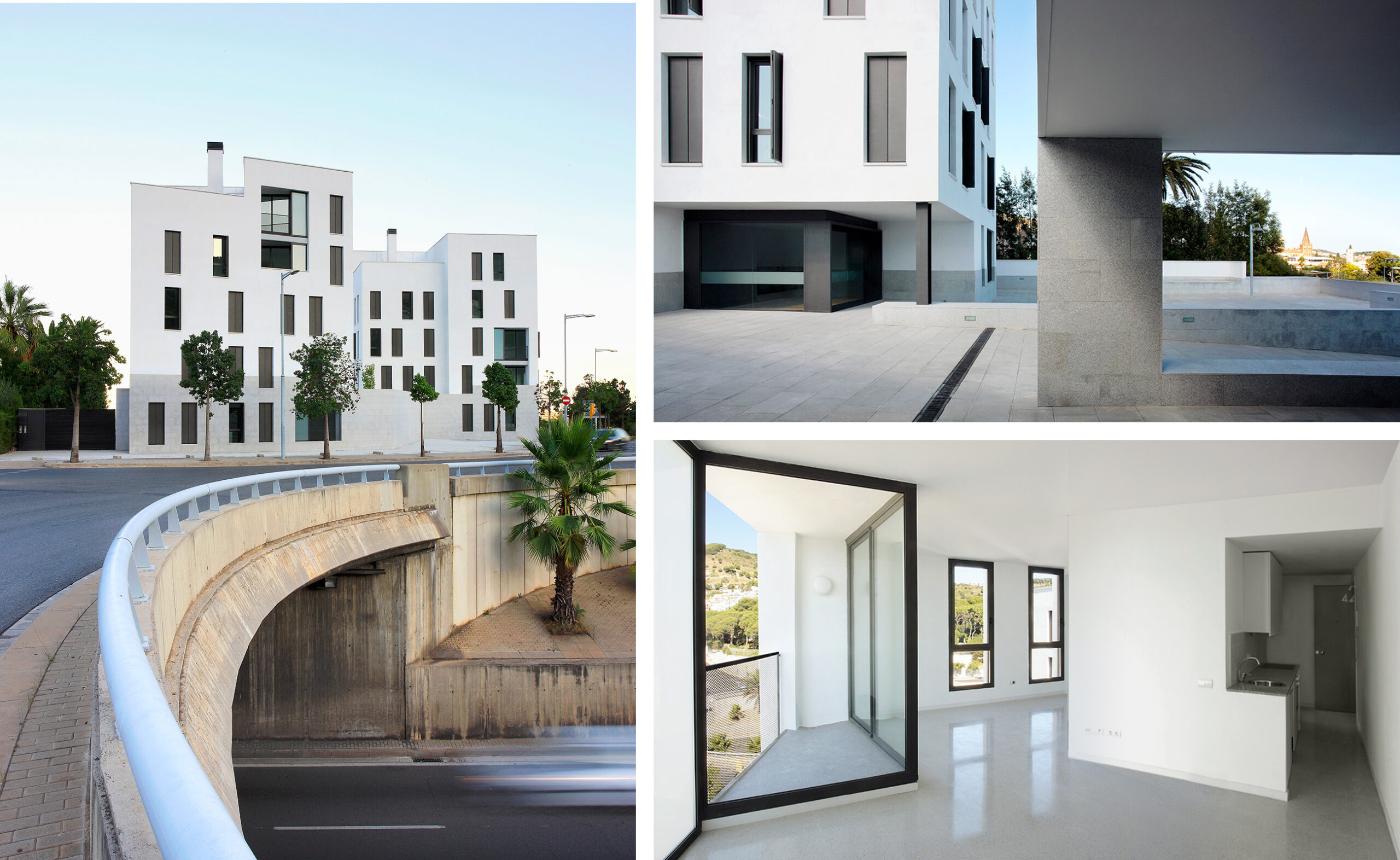
Exterior and Interior views of the 36-unit social housing in Can Caralleu by Peris+Toral Arquitectes, Barcelona, Spain | Photos by Gabriel Lerma Recasens (left and lower right), and José Hevia. (upper right)
The residential complex Can Caralleu by Peris+Toral Arquitectes was the winning entry to a public competition for social housing. The 36 apartments of 430 square feet (40 square meters) for young people provide open living space organized around a bathroom and kitchenette core. The open configuration optimizes the space and offers flexible use. Most of the firm’s body of work is social housing.
The 85-unit timber structure in Cornellà, a city in the southwestern part of the Barcelona Metropolitan area, is a successful example of social housing that combines good design and sustainability features, including fast construction and minimal emissions.
Challenging Prospects
In Barcelona, there is a shortage of affordable housing — in addition to a paucity of housing that implements sustainable design solutions. Technological advances in construction techniques and materials are slowly showing signs of social and environmental awareness. It is critical to provide housing that satisfies all the various income brackets to support social inclusivity and boost the economy while minimizing the environmental impact. Barcelona, like many touristic cities, can be tempted to put all the eggs in one basket, that of tourism, for economic gain. However, social cohesiveness is crucial, and it is also at the foundation of socioeconomic advancement.
Architects: Want to have your project featured? Showcase your work by uploading projects to Architizer and sign up for our inspirational newsletters.
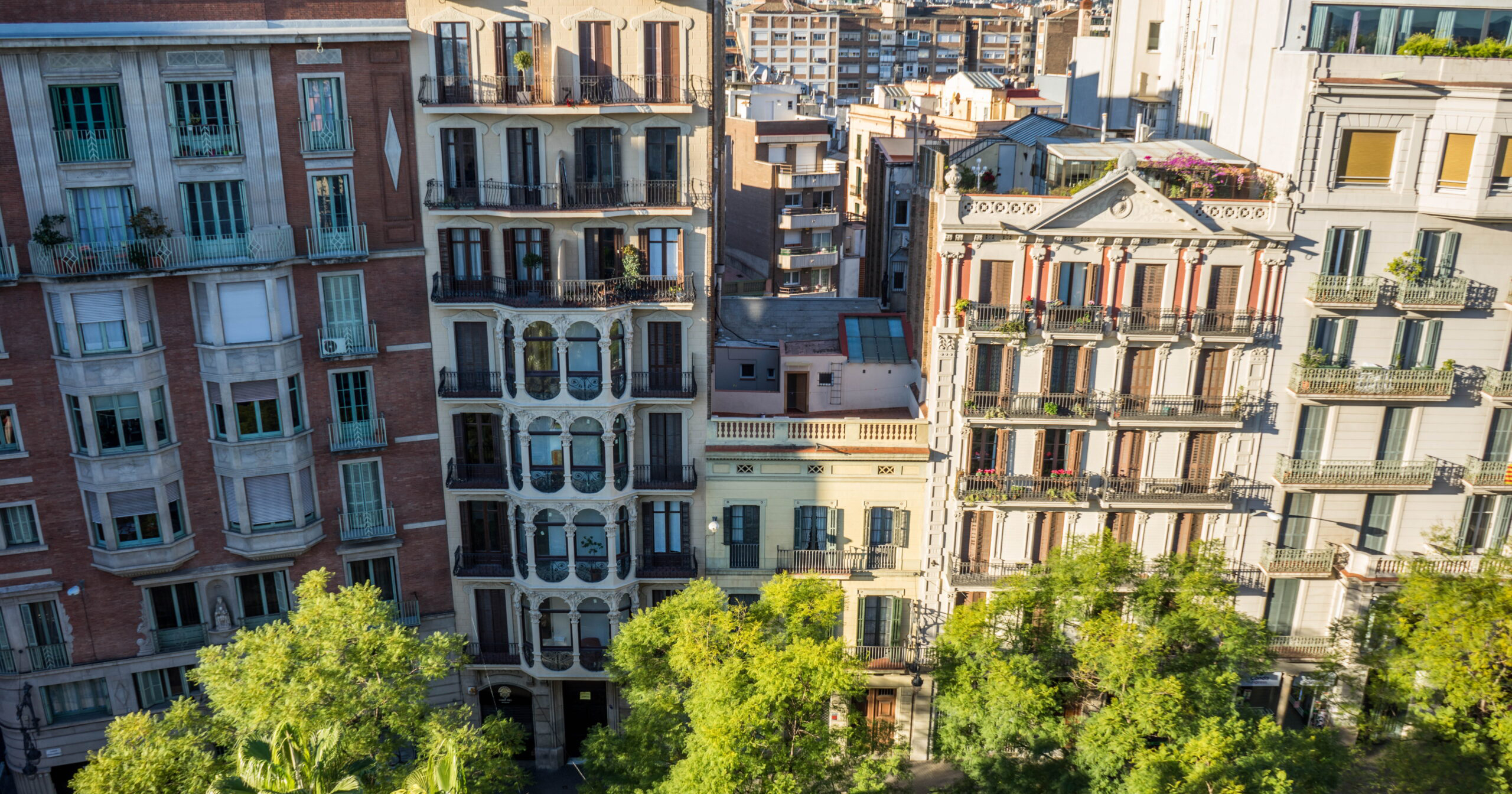
 “SANTA MADRONA”. 62 SOCIAL DWELLINGS . BARCELONA. “OBRA SOCIAL LA CAIXA”.
“SANTA MADRONA”. 62 SOCIAL DWELLINGS . BARCELONA. “OBRA SOCIAL LA CAIXA”.  114 PUBLIC HOUSING UNITS
114 PUBLIC HOUSING UNITS  36 Social Housing, Can Caralleu, Barcelona
36 Social Housing, Can Caralleu, Barcelona  58 Social Housing, Les Corts
58 Social Housing, Les Corts  TRANSFORMATION OF THE OLD THREAD STORAGE BUILDING IN A SOCIAL HOUSING COMPLEX
TRANSFORMATION OF THE OLD THREAD STORAGE BUILDING IN A SOCIAL HOUSING COMPLEX 